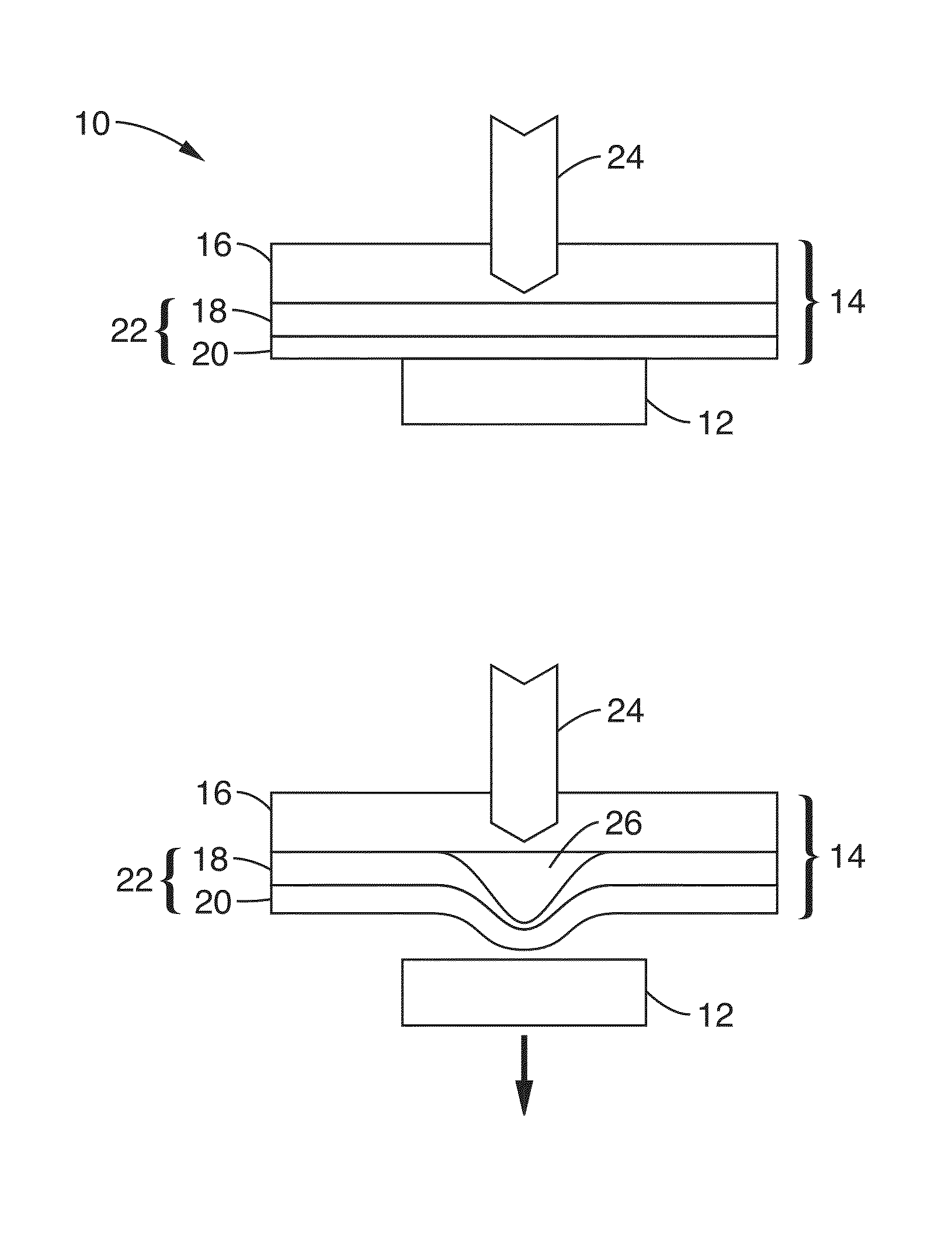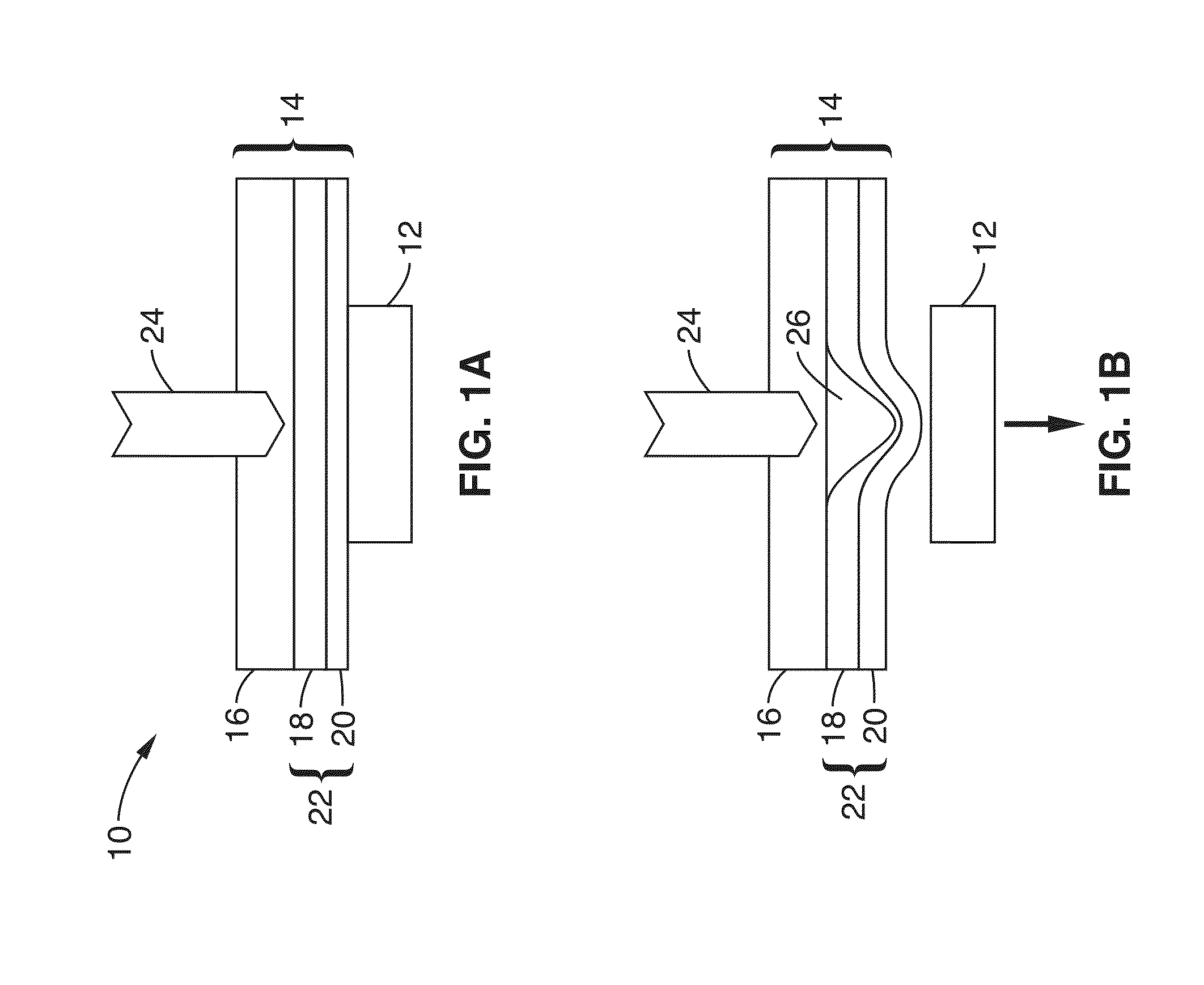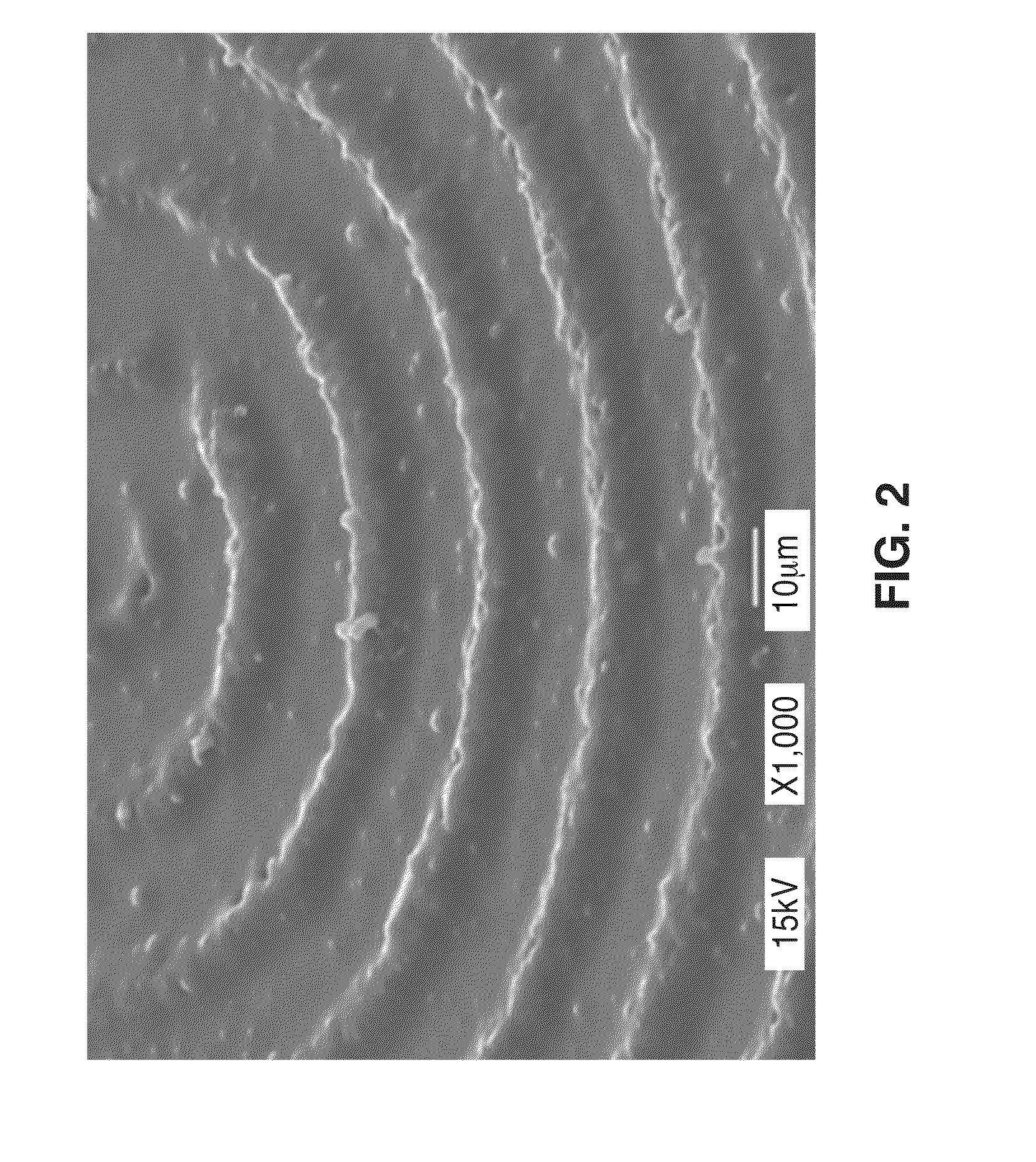Selective laser-assisted transfer of discrete components
a discrete component and laser-assisted technology, applied in the field of electromechanical manufacturing, can solve the problems of insufficient mass for separation from the carrier and transfer, difficult handling, and dice on either end of the size spectrum, and achieve the effects of easy handling, easy shattering, and convenient packaging
- Summary
- Abstract
- Description
- Claims
- Application Information
AI Technical Summary
Benefits of technology
Problems solved by technology
Method used
Image
Examples
embodiment 1
[0106]2. The method of embodiment 1, wherein said blister expands to a substantially fixed distance in response to receiving said low-energy laser beam.
[0107]3. The method of embodiment 1, wherein said blistering layer comprises a polymer, polyimide, or inorganic material selected for ablation in a controlled, and non-explosive, manner in response to irradiation with a laser beam of a given wavelength and pulse energy and which exhibits sufficient elastic behavior that a blister can be formed without rupturing.
[0108]4. The method of embodiment 1, wherein said blistering layer is subject to ablation that is limited to a non-penetrating ablation creating vapors to form said blister without rupturing said blister.
[0109]5. The method of embodiment 1, wherein said blister is formed in response to said low-energy laser beam evaporating a small amount of material from said blistering layer which generates gases that create a blister in said carrier which deforms said adhesive layer of said...
embodiment 8
[0113]9. The method of embodiment 8, wherein said scanning pattern is selected from a group of scanning patterns consisting of straight lines, curved lines, closed curves, circles, triangles, rectangles, and other geometric shapes.
[0114]10. The method of embodiment 1, wherein said low-energy laser beam comprises less than 1 mJ of energy to assure that said blisters do not burst during transfer of said article.
embodiment 10
[0115]11. The method of embodiment 10, wherein said low-energy laser has on the order of 20 μJ of energy per pulse.
[0116]12. The method of embodiment 1, wherein material vaporized by said low-energy laser beam are confined to an interior of said blister within said blistering layer.
PUM
| Property | Measurement | Unit |
|---|---|---|
| energy | aaaaa | aaaaa |
| energy | aaaaa | aaaaa |
| thickness | aaaaa | aaaaa |
Abstract
Description
Claims
Application Information
 Login to View More
Login to View More - R&D
- Intellectual Property
- Life Sciences
- Materials
- Tech Scout
- Unparalleled Data Quality
- Higher Quality Content
- 60% Fewer Hallucinations
Browse by: Latest US Patents, China's latest patents, Technical Efficacy Thesaurus, Application Domain, Technology Topic, Popular Technical Reports.
© 2025 PatSnap. All rights reserved.Legal|Privacy policy|Modern Slavery Act Transparency Statement|Sitemap|About US| Contact US: help@patsnap.com



